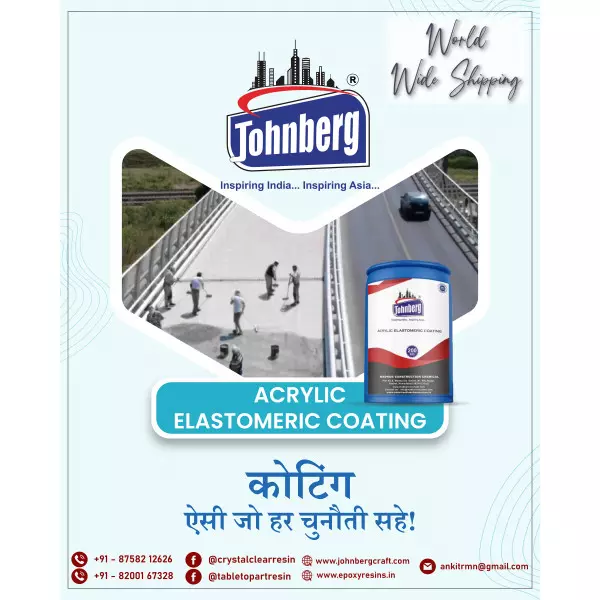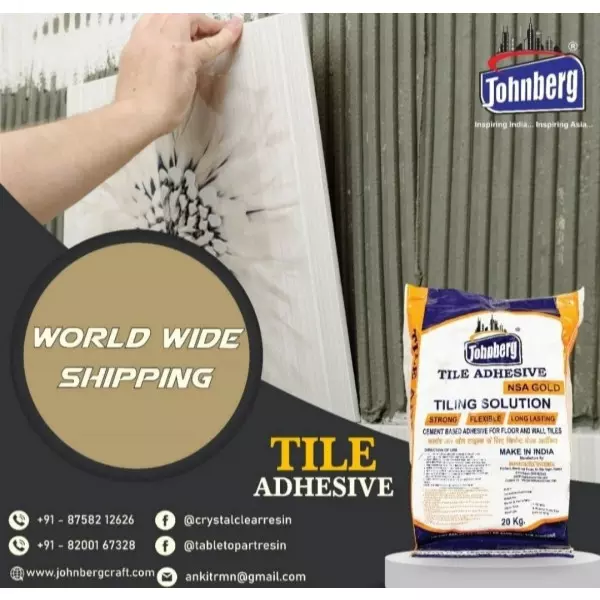- Home
- About Us
- Products
- Resin Furniture
- 3D Epoxy Flooring Service
- Resin Table Top
- Wooden Epoxy Resin Table Top
- Metallic Epoxy Flooring Service
- Conception Chemical Consultants
- Chemical Consultancy For Construction
- Construction Chemical Consultant
- Tile Grout
- Foundation Grout Consultant
- Paver Block Chemical Consultant
- Waterproofing Chemical Consultant
- Epoxy Pigment Consultant
- Heat Reflective Coating
- Water Repellent Coating
- Epoxy Grout
- Chemical Consultant
- Industrial Chemical
- Construction Chemical
- Epoxy Resin
- Epoxy Coating
- Polyester Resin
- Joint Sealants
- Cristal Clear Epoxy Resin And Hardner
- Construction Chemicals
- Polycarboxylate Ether And Liquid
- Solvent Cement
- Tile Protection Sheet
- Water Reducing Superplasticizer
- Epoxy Resin And Hardeners
- Two Component Waterproof Coating
- Epoxy Floor Coatings
- Casting Resin
- Sbr Latex Polymer
- Epoxy Grout Formulations
- Epoxy Resin Tabletops
- Tile Spacers
- Tile Levelling Spacers
- Industrial Night Vision Epoxy Grout
- Sbr Latex
- Johnberg Marble Polishing Liquid
- Acrylic Elastomeric Coating
- Weber Tile Adhesives
- Decorative Arts
- Resinic Crafts
- PU Flexible Tile Adhesive
- Resin Pressed Flowers
- Dry Pressed Flower
- Epoxy Putty
- Resin Furniture
- Services
- Updates
- Gallery
- Contact Us
Floor Tile Adhesive Manufacturers In Udaipur
Details of Floor Tile Adhesive
Floor tile adhesive is a bonding material used to secure tiles to a substrate (like concrete, wood, or cement board). It's essential for ensuring tiles stay in place, resist moisture, and support weight and traffic. Here's a detailed breakdown:
Types of Floor Tile Adhesives
Cement-Based Adhesive (Thinset Mortar)
Best For: Ceramic, porcelain, stone tiles
Substrates: Concrete, cement board
Features: Strong bond, water-resistant, good for wet areas (like bathrooms)
Types:
Unmodified thinset (needs water only)
Modified thinset (includes latex/polymer additives for flexibility and adhesion)
Ready-Mixed Adhesive (Mastic)
Best For: Smaller tiles (ceramic or mosaic)
Substrates: Drywall, plywood, backer board (interior only)
Features: Easy to use, pre-mixed, not suitable for wet areas or large/heavy tiles
Epoxy Tile Adhesive
Best For: High-performance areas, heavy-duty applications (commercial kitchens, industrial floors)
Features: Extremely durable, chemical-resistant, waterproof
Cons: Expensive, hard to work with, short pot life
Acrylic Adhesive
Best For: Vinyl tiles or rubber tiles
Features: Flexible, moisture-resistant, suitable for flexible or soft tiles
Key Specifications
Property Cement-Based Thinset Mastic (Ready-Mixed) Epoxy Adhesive
Setting Time 24–48 hours 24–72 hours 4–24 hours
Flexibility Medium (high if modified) Low Very high
Water Resistance Good (best if modified) Poor to moderate Excellent
Cost Low to moderate Moderate High
Application Surface Indoor/outdoor Indoor dry areas only Anywhere (even wet zones)
How to Apply Floor Tile Adhesive
Prepare the Surface:
Ensure it's clean, level, dry, and dust-free.
Use a primer if needed (especially on porous substrates).
Mix (if needed):
For cement-based types, follow manufacturer’s water-to-powder ratio.
Offered Product
Floor Tile Adhesive
Purity100 %Location TypeResidentialApplicationTile On TileService Location/CityMaharashtraPackaging Size20kgCategoriesThin-Setmortarfor Laying Of Tiles,marble, Heavy Stone Article For Exterior And Interior ApplicationEstablished In The Year "2013" we, "Madhur Construction Chemicals" are Engaged In Manufacturing, Exporting And Trading an Excellent Quality Range Of Construction Chemical, Epoxy Grout, Fabric Adhesive, Colour Pigment, Water Reducing Superplasticize... Read moreFloor Tile Adhesive Service Providers In Kerala
Floor Tile Adhesive Is A Bonding Material Used To Fix Tiles To The Floor Surface. It Is Designed To Provide A Strong And Durable Bond Between The Tile And The Subfloor. The Adhesive Can Be Used For Different Types Of Tiles Such As Ceramic, Porcelain, Vitrified, And Natural Stone.Types Of Floor Tile AdhesiveCement Based AdhesiveThis Is The Most Common Type And Is Usually Mixed With Water Before Application. It Is Suitable For Most Floor Tiles And Offers Good Strength And Durability.Ready Continue


